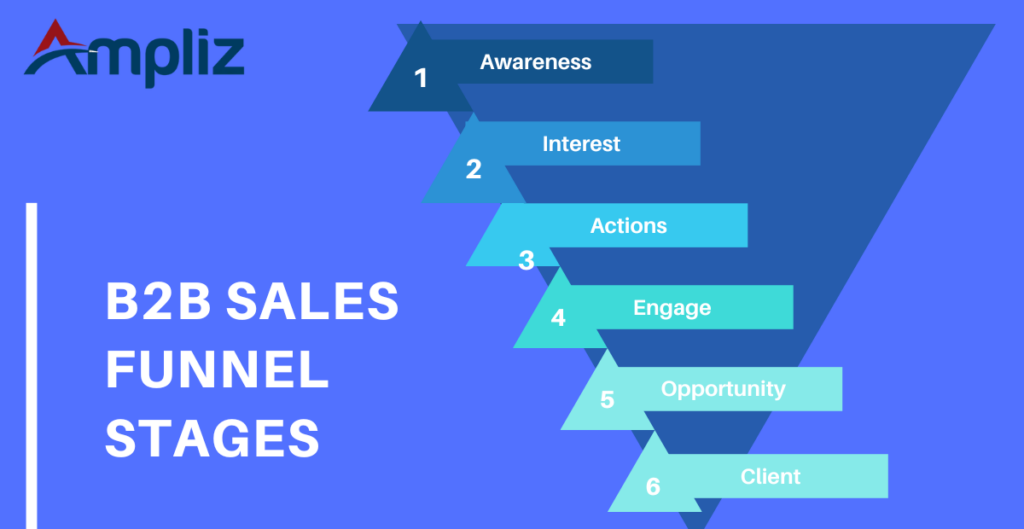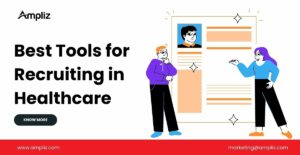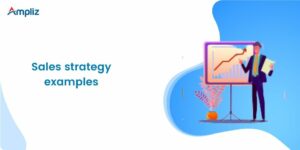The process a potential client takes from being an unidentified site reader to turning into a new customer for the business can be visualized using a B2B sales funnel stages.
A lead generation procedure in the B2B marketing funnel can be managed, along with the conversion phase. Human contact is still a crucial component of the upgrade process, though.
This is due to the fact that multiple decision makers are involved in the B2B selling process from the excellent option stage onward in order to reach an agreement and close the contract.
What is B2b Sales Funnel Stages?
B2B sales funnel stages are the series of steps that a potential customer goes through before making a purchase in the B2B market.
These stages typically include lead generation, lead nurturing, qualification and evaluation, proposal and negotiation, and finally closing the sale. Each stage requires different tactics to be successful.
Lead generation is all about finding potential customers who may be interested in your product or service. This can be done through various marketing channels such as email campaigns, social media advertising, or events.
Once you have generated leads, it’s essential to nurture them by building relationships with them over time. This involves providing valuable information and answering any questions they may have about your product or service.
Next comes the qualification stage where you determine if the lead is a good fit for your offering based on their needs and budget. If they meet your criteria, you move onto proposal and negotiation where you present an offer tailored to their specific needs.
Finally comes closing the sale – this is when negotiations are finalized and contracts are signed. By understanding each of these B2B sales funnel stages, businesses can optimize their processes for better results from start to finish.
A B2B Sales Funnel Stages: What Is It?
A stage-by-stage description of the purchase process for the B2B sales funnel is known as a sales funnel. This might be demonstrated using a top-down, middle-up, bottom-up funnel structure or with more definite phases (e.g. Purchase).
In any scenario, it’s critical to keep in mind that perhaps the B2B sales funnel stages is a concept and a depiction of the buying process.
B2B sales teams utilize the funnel model to decide how to approach a specific potential client and to determine what kinds of inquiries to make and what details to offer in order to move that client along the funnel.
Currently, a few cynics claim that “Sales Funnels Are Dead.”
Although this is untrue, the underlying critique—that B2B buyers’ journeys are complicated and they don’t always go in a sequential manner as most marketing funnels claim—is at least partially fair.
Consider using a sales funnel stages B2B model listed below:
1. Awareness
2. Interest
3. Action
4. Engage
5. Opportunity
6. Client
A certain consumer might not always follow this road in a straight line. They may quickly move through the first three phases, move on to the assessment stage, and then determine that the product they initially believed they required isn’t a suitable fit. In this case, they would then return to the consideration stage.
The intermediate four sales funnel stages B2B may well not take place at all in a different scenario. A buyer may decide to make a purchase right away in order to assess the fit and feel of a product, albeit this is less typical in B2B sales contexts (because the prices are intrinsically higher).
Examples of sales funnels that function as high-level models are the best.
So how can we gauge and monitor a customer’s progress in a sales funnel? Pipelines are used.
Sales Pipeline vs Sales Funnel
The sales funnel and indeed the sales pipeline are not equivalent.
The mechanism to generate, qualify, and nurture leads are called the sales pipeline. Where the sales funnel is a picture of the numerous phases of the decision-making procedure your prospective customers go through.
What Is a Sales Pipeline?
The sales pipeline is a methodical strategy for recruiting, lead qualification, distribution channel sales, and customer retention.
For the benefit of the sales team as well as the sales manager, a sales pipeline serves as a visual depiction of the complete sales process. Every sales funnel offers possibilities and distinct phases when the sales representative must take particular actions.
A typical Sales Funnel Stages B2B can be of 6 steps
Let’s dissect it now. An example of a B2B sales funnel stages In six steps:
Awareness
By raising awareness of the brand, merchandise, and services your business provides, you now draw all potential clients into the funnel.
Anything and everything that allows you to achieve new prospects on pertinent platforms and spread the word about your goods and services should be part of your marketing plan. You can either choose to expand naturally for this purpose or use goods and services that people on social networks & google search for speedy results.
For best results, I usually advise combining paid and organic advertisements. By ranking first on the results page, PPC advertisements on Google, for instance, can help you not only increase visitors to your website but also add the recall element and brand reputation.
An excellent way to raise exposure among the already existing audience and potential clients is by guest posting on websites that are related to your target demographic and where they go to remain updated.
Interest
At this point, you pique the audience’s fascination with the company that you initially drew in at the awareness phase by content creation.
For it though, you can use social media retargeting to show your visitors more content pertaining to the website pages they previously visited.
Social media platforms like Twitter, Facebook and LinkedIn all include technologies, such as Pixels, Facebook, Twitter Tags and LinkedIn Insights Tags, that allow you to follow the actions of website visitors and retarget them with adverts based on their prior behavior.
By doing so, you may maintain contact with them and build dialogue while providing them with more individualized and pertinent information that will aid in their decision-making, hopefully in your favor.
Action
Your goal at this point should be to get return visitors to convert to the homepage. Buttons with catchy wording like “Request a Demo,” “Request a callback,” or “Download Now” are frequent examples.
Landing pages are essential for generating leads. Because of this, the content, CTAs, and design on your page should be carefully considered so that visitors will find the material relevant to their needs and be motivated to take the action you want them to on the page. Make sure you have an attractive logo design with cool logo fonts.
When a visitor does one of these actions, you have the information you need to move the conversation away from social media, direct them towards the next step, and so forth until they are prepared to speak with sales.
Engage
You currently have leads, or the data of the most likely customers, in your database.
When a customer reaches this level of the funnel, they have already completed 57% of the purchasing process. It indicates that the potential customer views your business as a competitive vendor among other market participants.
Keep your leads interested and satisfied at this point by using content marketing including whitepapers, blog pieces, customer reviews, case analysis, etc.
The sales department often enters the picture at this point to develop much more qualified leads. To entice them into the selling process, turn to B2B message writing to make contact with them.
This represents the most important step of the funnel since it determines how far the discussion can go between these parties based on what you are doing and how you maintain your customer’s interests.
Opportunity
In order to drive the purchase process along, the sales staff now speaks also with leads who had a high degree of involvement in the earlier stage.
The sales staff sends these leads incredibly targeted emails to start a one-on-one conversation. Additionally, at this point, cold outreach is more successful because the prospect is more familiar with the company and may be eager to continue the conversation.
If everything is done correctly and the potential customer is still considering making a purchase from your business, the salesperson schedules their initial meeting, and that’s when the “Opportunity” occurs.
This is where a strong employee training course on closing these types of sales comes in handy. If employees are used to dealing with these situations, the likelihood they will close the deal with a customer is much higher.
Client
Whenever a lead has agreed to do a deal with your organization and the chance has been closed-won, they are then considered a client.
Now, in business-to-business transactions, the time it takes from the initial encounter with prospective, or chance, to the signing of the full contract relies on a variety of variables, including the number of people involved, financial limitations, etc. It could last for just one day or several months.
Always remember that in a B2B environment, you can only succeed by providing your clients with the greatest information available regarding their issues and the solution you are providing.
Therefore, be sure to give your prospects the best materials to educate them along your sales funnel so they can advance to the next level and become your customers.
Asking strong sales questions at each B2B Sales Funnel Stages
Nothing is more unpleasant than a sales meeting that comes out as more of an interrogator than a discussion and is peppered with yes/no questioning that makes both parties second-guess their decisions.
These calls are not only excruciatingly unpleasant, but they also hurt sales outcomes. Longer replies to questions have been demonstrated to affect call conversion rates.
In light of this, we’ll examine some questions you can ask at every conversion and sale to foster trust and truly enhance your capacity to close (this time, we’ll utilize a more condensed B2B sales funnel stages design).
Top of funnel
Top of Funnel (ToFU) connections are often outgoing leads for marketers (i.e., you’re cold phoning), as opposed to inbound leads, who are typically further along the buyer’s journey when they reach you.
These customers are in a stage of the buying process that we refer to as “latent pain,” which means they haven’t yet accepted the problem you address (even though they may already have one) and determined that it deserves top priority in their company.
Here, the salesperson’s role is to investigate and emphasize that customer’s critical problem, to help them comprehend how it is genuinely affecting their life, and to persuade them to take action (It is the motivator for becoming a leader in the middle of the funnel).
Here, we focus on the now rather than asking questions about potential solutions or results through Email.
- Please describe your major business issues in relation to. (context of your offering).
- How is this manifesting as a problem for the company?
- What effect does this have on your day-to-day life?
- How are you now dealing with the pain/issue?
- What would it imply if we could solve this issue?
- What will happen if we ignore it?
Middle of funnel
Middle of the Funnel (MoFU) leads will either be:
- You have been dealing with outbound leads (and are certain that their problem needs to be fixed.)
- Inbound leads who have actively sought your assistance to address an existing difficulty.
MoFU leaders don’t want to play around with a conversation in which they are asked, “Tell me everything about the obstacles you’re having and why it sucks so bad.” They want to discuss potential outcomes and alternative strategies.
So, inquire as follows:
- Please explain to me what you hope to achieve by introducing __ (tool/category).
- What KPI would you like to see improved if I could just wave a magic wand?
- What factors affect your purchasing decisions?
- What factors are most significant to you while evaluating vendors?
- What’s lacking from our current solution, exactly?
Bottom of funnel
BoFU leads (bottom of the funnel) are ready to buy. Although they may still be evaluating other suppliers, they have already determined that your solution may be a good fit.
The conversation should be led toward concluding a purchase with the help of sales closing questions. Use these
- What precisely happens between receiving approval and executing the contract?
- What other details do you require from us in approval to progress?
- What potential roadblocks might stand in your way?
- Do you envision a scenario in which you advance before [date]?
Conclusion
A broken sales funnel stages B2B is a major obstacle to expanding your company and reaching your overall marketing and advertising objectives. Therefore, every business should discover a way to reduce or get rid of leakage in its sales funnel stages B2B.
An ineffective value proposition is one reason why sales are lost. Examine your worth offer to see if it complies with both your customers’ wants and your company’s objectives.
Investigating your sales and marketing communications is one way to ensure your safety. Work smarter to make sure your value proposition is revised to reflect the goals of your business.
Verify that it is still reliable, usable, and functional. If not, you might want to perform an evaluation or a comprehensive overhaul, and if you require assistance, a specialist is always available to point you in the proper direction.




